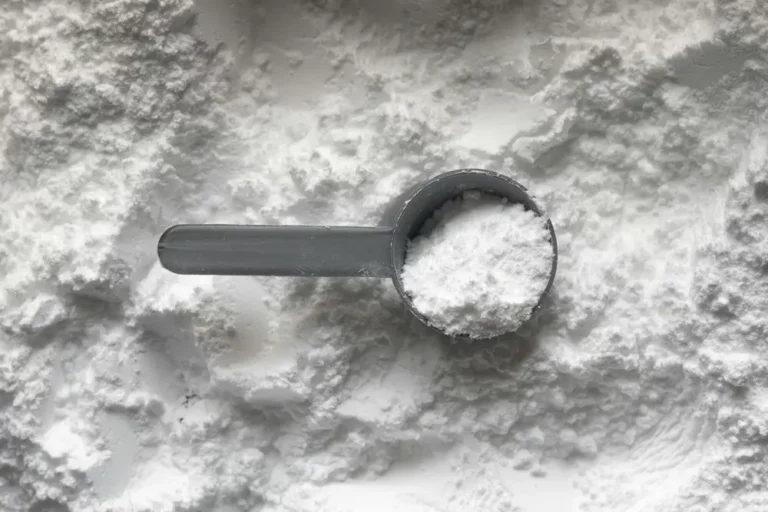Choosing the Best Creatine Type for Your Fitness Goals
When it comes to boosting your performance in the gym, creatine is often the go-to supplement for many. Known for its benefits in muscle building, fat loss, and enhancing exercise performance, it’s no wonder creatine has cemented its place in the fitness world. But with various types available, choosing the right one can feel like navigating a maze.
Among the crowd, creatine monohydrate and creatine hydrochloride (HCl) stand out as popular choices, each with its unique properties. While the differences between them might seem minor, they can influence how quickly your body absorbs and utilizes the supplement. Let’s dive into the world of creatine and uncover which type might just be your perfect workout partner.
Overview of Different Types of Creatine
When I first started exploring the world of supplements, especially those aimed at enhancing gym performance, creatine was a term that frequently popped up. It’s touted for its muscle- and performance-enhancing benefits, but what really piqued my interest was learning about the various forms of creatine available. Let’s dive into why creatine is so essential for muscle and performance enhancement and explore the most common forms you’ll find on the market.
The Role of Creatine in Muscle and Performance Enhancement
I’ve found that creatine plays a pivotal role in how our muscles perform during high-intensity workouts. Creatine serves as a quick energy source for muscles, helping to increase strength and reduce fatigue during workouts. This is because creatine helps regenerate ATP (adenosine triphosphate), which is the primary energy carrier in our cells, particularly during short bursts of intense physical activity.
Supplementing with creatine can lead to remarkable gains in strength and muscle mass. I was amazed to learn about its ability to accelerate ATP production, enhancing energy availability during demanding workouts. This not only aids in improving performance but also significantly contributes to muscle recovery and growth.
Common Forms of Creatine Available on the Market
As I delved deeper, I discovered a variety of creatine forms, each boasting different features and benefits. Here’s a quick rundown:
- Creatine Monohydrate: This is the most researched and widely used form of creatine. Its popularity stems from its effectiveness and affordability. It enhances strength, increases lean muscle mass, and helps muscles recover more quickly during exercise.
- Creatine Ethyl Ester: Often touted for its superior solubility and ability to be more easily absorbed by the body, this form claims to reduce the bloating and gastrointestinal issues sometimes associated with other forms of creatine.
- Creatine Hydrochloride (HCl): Known for its high solubility, this form is said to require smaller doses due to its efficient absorption rates. Anecdotal evidence suggests a lower risk of digestive issues compared to creatine monohydrate.
- Buffered Creatine: Marketed under various names, this type of creatine is essentially creatine monohydrate with an alkaline powder added. It’s claimed to have less chance of conversion into creatinine, a by-product of creatine metabolism, thereby improving its efficacy.
- Creatine Magnesium Chelate: This creatine is bound with magnesium, aiming to enhance its absorption and reduce muscle cramping, a side effect some experience with other forms of creatine.
Creatine Monohydrate
When I first started exploring the wide world of supplements, creatine monohydrate quickly stood out as the poster child for muscle gain and performance enhancement. It’s the most researched form of creatine and has a well-established reputation for being a powerhouse supplement. Its primary advantage lies in its simplicity and effectiveness, which makes it a go-to option for many athletes and fitness enthusiasts like me.
Creatine monohydrate serves as a quick source of energy for muscle contractions, which is crucial during high-intensity activities. By increasing the phosphocreatine stores in your muscles, it enables more rapid generation of ATP, the energy currency of cells. This not only supports sustained muscular effort but also contributes significantly to muscle volume through hydration. Essentially, it pulls more water into your muscle cells, amplifying their size and potentially enhancing your strength.
Another aspect I find incredibly beneficial is its role in speeding up recovery times. Intensive training sessions can be taxing, but incorporating creatine monohydrate into my routine has noticeably reduced my downtime, allowing for more frequent and productive workouts.
Research and Efficacy of Creatine Monohydrate
Digging into the scientific literature, I’ve found ample evidence supporting the efficacy of creatine monohydrate. One comprehensive meta-analysis of over 22 studies highlighted its positive effects on strength and muscle mass increments, underscoring its standing as an effective supplement for enhancing performance. The research consistently demonstrates that individuals supplementing with creatine monohydrate experience significant improvements in high-intensity exercise performance, which isn’t just limited to strength training but extends to various sports and activities.
It’s fascinating to see how studies validate the anecdotal experiences of so many in the fitness community, including my own. Research points out that, regardless of the exercise modality—whether it’s resistance training, sprinting, or endurance work—creatine monohydrate supplementation leads to increased power output and performance.
Moreover, unlike some other supplements, creatine monohydrate is celebrated for its safety profile. Long-term studies have assessed its effects, revealing minimal to no adverse effects when consumed at recommended dosages. This peace of mind adds to its appeal, ensuring that I can focus on my training goals without worrying about potential health risks.
Creatine Ethyl Ester
In exploring the diverse world of creatine supplements, I’ve come across a fascinating variant: Creatine Ethyl Ester (CEE). Unlike its more famous cousin, Creatine Monohydrate, CEE promises enhanced absorption and effectiveness, a claim that has piqued the interest of fitness enthusiasts and athletes alike.
Understanding Creatine Ethyl Ester
Creatine Ethyl Ester is a form of creatine that’s been modified to include an ester, a chemical compound that’s believed to increase the permeability of the substance across cell membranes. In theory, this modification should make CEE more easily absorbed by the body, providing a quicker and more efficient delivery system for creatine to reach muscle cells. The selling point of CEE revolves around the notion that it bypasses some of the common issues associated with traditional creatine supplementation, such as bloating and water retention. But, it’s crucial to sift through the marketing claims to understand the actual science behind CEE.
Comparing Creatine Ethyl Ester with Creatine Monohydrate
When comparing Creatine Ethyl Ester to Creatine Monohydrate, the debate often circles around absorption rates, effectiveness, and side effects. Creatine Monohydrate, the most researched form of creatine, has a proven track record for increasing muscle strength, size, and power. It’s renowned for its effectiveness but also known for causing some undesirable side effects in certain individuals, such as gastrointestinal distress or water retention.
On paper, CEE seems like the perfect solution to these issues, offering a form of creatine that’s easier on the stomach and more efficiently absorbed. However, it’s essential to look into the available research to verify these claims. Studies comparing the effectiveness of CEE to Creatine Monohydrate have produced mixed results. Some research suggests that the esterification of creatine does not significantly enhance its absorption or its ability to increase intramuscular creatine levels beyond that of Creatine Monohydrate.
Creatine Hydrochloride (HCL)
When I’m exploring different types of creatine, Creatine Hydrochloride (HCL) stands out for several reasons. Unlike its more well-known counterpart, Creatine Monohydrate, Creatine HCL is known for its enhanced solubility and absorption rates. Let me dive into what makes Creatine HCL unique and why it might be worth considering for your supplementation routine.
Advantages of Creatine HCL
The most significant advantage I’ve noticed with Creatine HCL is its superior solubility. Researchers have found that Creatine HCL is about 40 times more soluble in water than Creatine Monohydrate. This means it dissolves easier in liquids, which theoretically could lead to better absorption by the body. The idea behind this is that the more easily a substance dissolves, the more efficiently it can be absorbed and utilized by the muscle cells.
Another advantage of Creatine HCL is that it tends to cause fewer digestive issues like bloating and water retention. This is a big deal for me because it means I can enjoy the benefits of creatine without feeling uncomfortable or weighed down, which is a common complaint with other forms of creatine.
Solubility and Dosage Considerations for Creatine HCL
Given its high solubility, the recommended dosage for Creatine HCL is typically lower than that of Creatine Monohydrate. For most people, a daily intake of 1 to 2 grams of Creatine HCL is sufficient. This is significantly less than the 5 grams daily recommended for Creatine Monohydrate. The lower dosage not only makes supplementation more convenient but also more cost-effective in the long run.
Moreover, the solubility of Creatine HCL allows for versatile consumption methods. I personally enjoy mixing it with my post-workout shake, but you can easily blend it with just water, or even juice, without encountering any undissolved gritty texture. This flexibility in consumption ensures that I’m more consistent with my supplementation, contributing to better overall results.
Creatine Magnesium Chelate
When I dive deeper into the world of creatine, I discover some fascinating variations. One such variant that’s caught my attention lately is Creatine Magnesium Chelate. It’s not just your ordinary creatine supplement; this one brings something special to the table.
The Combination of Creatine with Magnesium
What sets Creatine Magnesium Chelate apart is its unique blend. In this supplement, creatine is bound to magnesium, a vital mineral our bodies need for hundreds of enzymatic processes. Combining creatine with magnesium aims to enhance the absorption and effectiveness of creatine itself. I’ve read that when these two elements join forces, they might mitigate some common issues associated with creatine supplementation, such as water retention and bloating. What intrigues me most is how this combination could potentially improve creatine’s impact on muscle strength and recovery.
Potential Benefits and Research on Creatine Magnesium Chelate
The science behind Creatine Magnesium Chelate is what truly fascinates me. Research suggests that this combo could offer several fitness advantages over standard creatine monohydrate. For starters, the presence of magnesium may improve creatine’s absorption, making it more bioavailable to muscle cells. This means you might get more bang for your buck with each dose, enhancing your training outcomes.
- Enhanced Muscle Performance: There’s evidence that athletes supplementing with Creatine Magnesium Chelate experience improvements in strength and power output.
- Reduced Muscle Fatigue: By facilitating a more effective replenishment of ATP, our muscles’ primary energy source, this creatine form helps combat early fatigue during high-intensity exercise.
- Minimized Side Effects: The added magnesium assists in reducing gastrointestinal discomfort commonly linked with creatine monohydrate.
It’s important to note, however, that research is still emerging, and more studies are needed to fully understand the extent of these benefits. Yet, the findings I’ve come across so far are promising, suggesting that Creatine Magnesium Chelate could be a powerful ally for those looking to maximize their fitness routine without the unwanted side effects of traditional creatine supplementation.
Creatine Nitrate
When exploring the vast world of creatine supplements, I’ve come across various forms, each claiming their own set of benefits. Creatine Nitrate stands out for a few interesting reasons. Unlike traditional creatine monohydrate, creatine nitrate is a newer form that combines creatine with a nitrate group. This combination is intriguing because it’s not just about improving muscle energy but also about enhancing absorption and offering potentially unique benefits related to nitrates themselves, such as improved blood flow.
Examining the Solubility and Effectiveness of Creatine Nitrate
One of the first things I learned about creatine nitrate that really caught my attention was its solubility. It’s known that the solubility of a supplement can greatly affect its absorption in the body. Studies have suggested that creatine nitrate is significantly more soluble in water than creatine monohydrate. This increased solubility implies that it might be more easily absorbed by our bodies, which in turn could enhance its effectiveness.
In terms of effectiveness, the addition of the nitrate group to creatine not only aims at improving creatine uptake in muscles but also may offer cardiovascular benefits due to the nitrate turning into nitric oxide—a compound that helps dilate blood vessels, improving blood flow and oxygen delivery to tissues. This dual-action makes creatine nitrate a fascinating option for both strength and endurance athletes.
Buffered Creatine (Kre-Alkalyn)
When I first stumbled upon buffered creatine, also known as Kre-Alkalyn, I was intrigued by its unique approach to creatine supplementation. Unlike the traditional creatine monohydrate, Kre-Alkalyn is designed to enhance stability and absorption by modifying the pH level. Buffered creatine is formulated to be more alkaline, the theory being that by increasing the pH level, the creatine is less likely to convert to creatinine in the stomach before it can be absorbed. This could potentially allow more creatine to enter the muscle cells, making it more effective.
The standout properties of buffered creatine revolve around its improved solubility and stability in liquid, which not only helps in reducing the typical side effects associated with creatine monohydrate like bloating and cramping but also might enhance its effectiveness. Its proponents argue that because of these properties, you can take lower doses compared to creatine monohydrate while still reaping all the benefits, thus making it an efficient and cost-effective option for many.
Evaluating the Effectiveness of Kre-Alkalyn
Determining the effectiveness of Kre-Alkalyn has been a topic of interest for me and many others in the fitness community. Studies comparing Kre-Alkalyn to creatine monohydrate yield mixed results, with some suggesting comparable performance improvements while others show a slight edge for either variant in different aspects such as strength gains and muscle endurance. What’s boldly clear, though, is that Kre-Alkalyn does offer a viable alternative for individuals who experience unpleasant side effects from creatine monohydrate.
Personal anecdotes and broader community feedback have highlighted Kre-Alkalyn’s appeal, particularly among those looking for a ‘gentler’ creatine option. The reduced risk of bloating and stomach discomfort has made it my go-to for periods when I’m focusing on maintaining a lean physique without sacrificing performance in the gym. Additionally, the convenience of not needing a loading phase is a significant plus for me, simplifying my supplementation routine.
Creatine Anhydrous
When discussing the plethora of creatine variants available in the supplement marketplace, creatine anhydrous often emerges as a notable mention. Unlike its more popular cousin, creatine monohydrate, creatine anhydrous offers a unique twist in the creatine narrative.
Purity and Concentration of Creatine Anhydrous
What sets creatine anhydrous apart is its purity level. The term “anhydrous” refers to the absence of water, which in the context of creatine anhydrous means that it’s essentially creatine in its purest form, with the water molecule usually attached to creatine in creatine monohydrate removed. This process results in a product that boasts a higher concentration of creatine by weight compared to creatine monohydrate. I’ve found that creatine anhydrous contains about 99% creatine by weight, compared to the 88-90% found in creatine monohydrate. This higher concentration potentially means you’d need a smaller dose to achieve the same effect as a larger dose of creatine monohydrate, making it an efficient option for those sensitive to the dosages of their supplements.
Comparison with Creatine Monohydrate
When I compare creatine anhydrous to creatine monohydrate, several points stand out. First, the increased purity and concentration of creatine anhydrous could theoretically offer a more potent supplementing option. This doesn’t just mean less product consumption for the same benefits, but it might also translate to reduced chances of experiencing common side effects associated with creatine monohydrate, such as bloating or water retention. Yet, it’s essential to remember that despite the theoretical advantages of creatine anhydrous due to its higher concentration, studies comparing the two directly are scarce. Most research backing up the efficacy of creatine supplementation in boosting performance, increasing strength, and enhancing muscle mass primarily involves creatine monohydrate. Thus, while the science behind creatine anhydrous is promising, I always advise people to consider their individual responses to different supplements. After all, what works wonders for one may not necessarily do the same for another.
While creatine anhydrous shines in its purity and potentially more manageable dosing, creatine monohydrate remains the gold standard in the realm of creatine supplements, backed by a vast array of scientific studies. Still, for those looking for a purer form of creatine with a higher concentration, exploring creatine anhydrous could be worthwhile.
Liquid Creatine
When I first heard about liquid creatine, I was intrigued. Most of us are familiar with creatine in its powdered form, but the liquid version offers a twist on the traditional supplement. Let me dive into what sets liquid creatine apart and discuss how its stability and absorption compare to the powdered form.
Features of Liquid Creatine
Liquid creatine is touted for its convenience and ease of use. Since it’s already dissolved in liquid, the theory is that your body can skip a step and begin utilizing the creatine immediately. This could be a game-changer for those who find powder supplements cumbersome or difficult to dissolve completely in liquids.
Another appealing aspect of liquid creatine is its portability. Carrying a small bottle of liquid is often easier than lugging around a tub of powder, especially for athletes and gym-goers who are always on the move. Plus, you can’t deny the allure of bypassing the gritty texture that sometimes comes with powdered supplements.
Assessing the Stability and Absorption of Liquid Creatine
However, before switching to liquid creatine, it’s crucial to consider the science behind it, particularly regarding its stability and absorption. One common concern is that creatine may not be as stable in liquid form over time, potentially leading to a breakdown into creatinine, a byproduct that’s not useful for muscle energy. Stability is key for ensuring you’re actually getting the benefits of creatine with each dose.
As for absorption, the theory that liquid creatine absorbs faster because it’s already dissolved is compelling. Fast absorption is particularly attractive for timing your supplementation around workouts for maximum effectiveness. However, it’s essential to note that the scientific community hasn’t reached a consensus on whether liquid creatine truly offers superior absorption compared to its powdered counterpart.
Choosing the Right Type of Creatine
When it comes to maximizing your workout results, finding the right type of creatine is crucial. With the market flooded with various forms, the choice can seem overwhelming at first glance. Let me help simplify this decision process by breaking down the key factors you should consider and offering recommendations based on specific fitness goals and individual responses to supplements.
Factors to Consider When Selecting a Creatine Supplement
First off, let’s talk about what you need to keep in mind while choosing a creatine supplement. Given the various types available, here are some crucial factors:
- Purity and Quality: Look for supplements that have undergone rigorous testing for purity. A high-quality creatine assures that you’re getting the most bang for your buck without unwanted fillers or additives.
- Solubility: Some forms of creatine, like Creatine Ethyl Ester and Effervescent Creatine, boast higher solubility. This means they might be more readily absorbed and used by your body, which could be a game-changer for your workouts.
- Absorption Rate: While Creatine Monohydrate is a common choice, some alternative forms claim to offer better absorption rates. This could mean quicker recovery times and improved performance.
- Side Effects: Certain types of creatine are notorious for causing bloat or gastrointestinal issues in some people. If you’ve experienced such side effects before, it might be worth exploring alternatives like Creatine Ethyl Ester.
Recommendations Based on Goals and Individual Responses
Moving on to recommendations. Your fitness goals and how your body responds to creatine will largely dictate the best type for you.
- For Muscle Building and Strength: Traditional Creatine Monohydrate has been extensively studied and shown to be incredibly effective in increasing muscle mass and strength. It’s also cost-effective, making it a solid choice for most.
- For Athletes Looking for Quick Recovery: If you’re an athlete who values rapid recovery, Creatine Ethyl Ester or Creatine Magnesium Chelate might be more up your alley. They’re reputed for their high absorption rates.
- For Those Sensitive to Gastrointestinal Issues: If bloat and discomfort have been your companions with creatine monohydrate, exploring Effervescent Creatine can offer solubility and absorption benefits with a pleasant taste and fewer digestive issues.
It’s also essential to consider how your body reacts to different supplements. While one type of creatine might work wonders for a friend, your body might respond differently. It’s wise to start with smaller doses to gauge your body’s reaction before fully committing to a specific form.
Conclusion
I’ve walked you through the maze of creatine supplements, highlighting how crucial it is to pick one that aligns with your body’s needs and your fitness aspirations. Remember, there’s no one-size-fits-all answer here. Whether you’re gunning for muscle mass or faster recovery, the right choice varies. I’ve shared my recommendations, but it’s essential to listen to your body. Starting with smaller doses can help you gauge how you react to different types of creatine. Here’s to finding your perfect match and reaching those fitness goals with a bit more ease!
FAQ – Frequently Asked Questions
What happens when you stop creatine?
When you stop taking creatine, your body’s natural creatine production resumes. You might notice a reduction in strength, endurance, and overall performance, but these changes are usually minimal. Maintaining a healthy diet and a consistent training regimen can help mitigate these effects.
Should I take creatine on rest days?
Yes, continuing to take 3-5 grams of creatine on rest days is recommended to maintain the level of creatine in your muscles. Consistent daily intake helps optimize its performance-enhancing benefits, even on days you don’t work out.
Does it matter which creatine you get?
Yes, it matters. Creatine monohydrate is the most studied and widely recommended for its safety and efficacy. Other forms, like Creatine Ethyl Ester or Magnesium Chelate, may offer different benefits like improved absorption or reduced side effects, but the evidence is less robust than for monohydrate.







